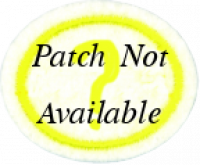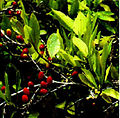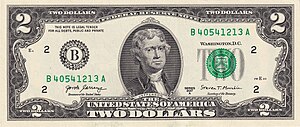Difference between revisions of "AY Honors/Currency (Template)/Answer Key"
| Line 329: | Line 329: | ||
{{CloseReq}} <!-- 8d --> | {{CloseReq}} <!-- 8d --> | ||
{{CloseReq}} <!-- 8 --> | {{CloseReq}} <!-- 8 --> | ||
| − | [[Category: | + | <noinclude><translate></noinclude> |
| − | [[Category:AY Honors/Secondary]] | + | ==References== <!--T:19--> |
| + | <noinclude></translate></noinclude> | ||
| + | |||
| + | [[Category:AY Honors/noindex{{GetLangSuffix}}|{{SUBPAGENAME}}]] | ||
| + | [[Category:AY Honors/Secondary{{GetLangSuffix}}]] | ||
| + | |||
<section end="Body" /> | <section end="Body" /> | ||
| + | |||
{{CloseHonorPage}} | {{CloseHonorPage}} | ||
Latest revision as of 18:31, 4 October 2021
1
Barter: as a dictionary puts it, barter is the exchange of something you own for something else that someone else owned. For example, if I raised chickens, and you grew apples, and I wanted some apples and you wanted a chicken, we would come to an agreement to exchange my chicken(s) for your apple(s).
After a while, I had enough of apples, and wanted something else. My other neighbor was vegetarian, and grew corn, but he did not want chickens. I found out that he also liked apples, so I bartered my chickens for your apples, and then traded the apples I got for my neighbor's corn. In a clumsy way, the apples were a medium of exchange, because they allowed me to trade for what I wanted. Unfortunately, you did not always want chickens, and apples were not always in season, so there were times in the year that I could not trade.
Simply put, a medium of exchange is a substitute used in trade to avoid the inconvenience of the barter system. This allowed the value of your apples, the corn, and my chickens to be valued differently. For example, I did not believe that I should only get one apple for one chicken. The chicken is bigger than an apple. Perhaps the first medium of exchange were stones. I would trade my chicken for four stones, and you would trade your apples for one stone, and the corn would be traded for two stones.
Very soon, we decided stones would not be a good medium of exchange, because:
- it was not very portable
- it could not be easily divided
- it was heavier than it was worth
- sometimes we could not recognize it
- and the neighbor's kid found a rockpile on the other side of the stream
Fast forward a few years, and currency has now been developed. Currency is a unit of exchange, which allows goods and services to be exchanged. It is one form of money (where money is anything that serves as a medium of exchange, a store of value, and a standard of value).
Unique forms of money
http://en.wikipedia.org/wiki/History_of_money
2
3
4
4a
An alloy is a combination of two or more elements, at least one of which is a metal, and where the resulting material has metallic properties. The resulting metallic substance usually has different properties (sometimes significantly different) from those of its components. Nearly all coins are made of alloys.
4b
A coin that has had its date altered in an attempt to deceive someone into thinking it is more valuable than it really is.
4c
A buffed coin is one that's been polished to make it look like an uncirculated or proof coin. Buffing a coin wears down its original surface, reducing its value.
4d
Coins which are made by pouring a molten alloy into a mold.
4e
Coins made of layers, like a metal sandwich.
4f
Commemorative coins are legally issued coins with a design intended to commemorate or draw attention to some event or person. They are so called to distinguish them from regular issue coinage.
4g
An engraved tool used for stamping a design onto a coin.
4h
The field is the background—the part of the coin that shows no picture or words.
4i
An inscription is any letter, word, or phrase pressed into the surface of a coin.
4j
A coin having letters written on its edge.
4k
The mint mark is a small letter that tells which mint branch struck the coin.
4l
The front side of currency or a coin (often called "heads" on a coin).
4m
A blank disc of metal from which a coin is made.
4n
Proof coins use a special process that gives them a shiny, mirror-like background and a "frosted" relief. Proof sets are made every year for all of our circulating coins. Like uncirculated coins, proof coins are not meant to be spent.
4o
The reeded edges still found on many coins (always those that were once made of gold or silver, even if not so now) were originally designed to show that none of the valuable metal had been shaved off the coin. These show up as ridges along the edge of the coin.
4p
The back side of currency or a coin (often called "tails" on a coin).
4q
A particular design or motif used over a period of time. This can used for a single denomination, or in some cases, used for several denominations.
4r
A representative coin, usually a common date, from a particular issue of a specific design, size, or metallic content of U.S.coinage. For example: the "Mercury Head" dime is a "type" coin, as is the "Lincoln" penny.
4s
A whizzed coin has been wire brushed or burnished, often on a wheel, for the same reason. Whizzing a coin wears down its original surface, reducing its value.
4t
When a coin is made, the blank is placed inside a collar and the coin is struck with a die. Sometimes a very thin piece of metal from the blank will flow out between the collar and the die. This is called the wire edge.
5
<!- Use this template to display paper money for your country.
| Two Dollar Bill | |
|---|---|
-->
6
Grading coins is an art that requires some skill. Anyone with some practice can get a fairly good idea as to the neighborhood of the grade of a coin. It's important to know the grade of a coin because, in general, the higher the grade of a coin, the higher its value.
Coins are usually graded on a 70 point scale that was devised by Dr. William Shelby. 0 means that you can probably tell that it was once a coin, while 70 means that it is perfect. Some people, such as unscrupulous coin sellers, may overgrade coins so that they can sell them for more money than they are actually worth.
If you don't know how to grade coins, you should not buy coins without help. If you do not know how to grade coins for yourself, you will eventually learn, but the process could be expensive. Selling coins does not present as much of a problem. Just take the coins you want to sell to several different dealers to get their opinions as to the grade. Always ask for the grade opinion before asking for a price, as it can help in negotiating a fair price.
If you are interested in learning to grade coins yourself, you may want to start with the book titled "Official A.N.A. Grading Standards for United States Coins" published by the ANA.
Grade and Description
Cull (Mutilated coin) These coins are not just worn out, but may be bent, broken, stuck together, or incomplete.
PO-1 (Poor) Identifiable date and type
FR-2 (Fair) Mostly worn, though some detail is visible
AG-3 (About Good) Worn rims but most lettering is readable though worn
G-4 (Good) Slightly worn rims, flat detail, peripheral lettering nearly full
G-6 (Good) Rims complete with flat detail, peripheral lettering full
VG-8 (Very Good) Design worn with slight detail
VG-10 (Very Good) Design worn with slight detail, slightly clearer
F-12 (Fine) Some deeply recessed areas with detail, all lettering sharp
F-15 (Fine) Slightly more detail in the recessed areas, all lettering sharp
VF-20 (Very Fine) Some definition of detail, all lettering full and sharp
VF-25 (Very Fine) Slightly more definition in the detail and lettering
VF-30 (Very Finde) Almost complete detail with flat areas
VF-35 (Very Fine) Detail is complete but worn with high points flat
EF-40 (Extremely Fine) Detail is complete with most high points slightly flat
EF-45 (Extremely Fine) Detail is complete with some high points flat
AU-50 (About Uncirculated) Full detail with friction over most of the surface, slight flatness on high points
AU-53 (About Uncirculated) Full detail with friction over 1/2 or more of surface, very slight flatness on high points
AU-55 (About Uncirculated) Full detail with friction on less than 1/2 surface, mainly on high points
AU-58 (About Uncirculated) Full detail with only slight friction on the high points
MS/PR-60 (Mint State/Proof) No wear. May have many heavy marks/hairlines, strike may not be full
MS/PR-61 (Mint State/Proof) No wear. Multiple heavy marks/hairlines, strike may not be full
MS/PR-62 (Mint State/Proof) No wear. Slightly less marks/hairlines, strike may not be full
MS/PR-63 (Mint State/Proof) Moderate number/size marks/hairlines, strike may not be full
MS/PR-64 (Mint State/Proof) Few marks/hairlines or a couple of severe ones, strike should be average or above
MS/PR-65 (Mint State/Proof) Minor marks/hairlines though none in focal areas, above average strike
MS/PR-66 (Mint State/Proof) Few minor marks/hairlines not in focal areas, good strike
MS/PR-67 (Mint State/Proof) Virtually as struck with minor imperfections, very well struck
MS/PR-68 (Mint State/Proof) Virtually as struck with slight imperfections, slightest weakness of strike allowed
MS/PR-69 (Mint State/Proof) Virtually as struck with minuscule imperfections, near full strike necessary
MS/PR-70 (Mint State/Proof) As struck, with full strike
7
- Remember: A type set is a coin design that does not change from year to year (except for the date and mint marks).
7a
7b
7c
8
8a
8b
8c
A type set is generally defined as a collection that contains one, and only one, of each design for a series or complete coinage series.
8d
References











